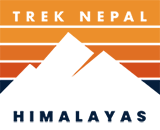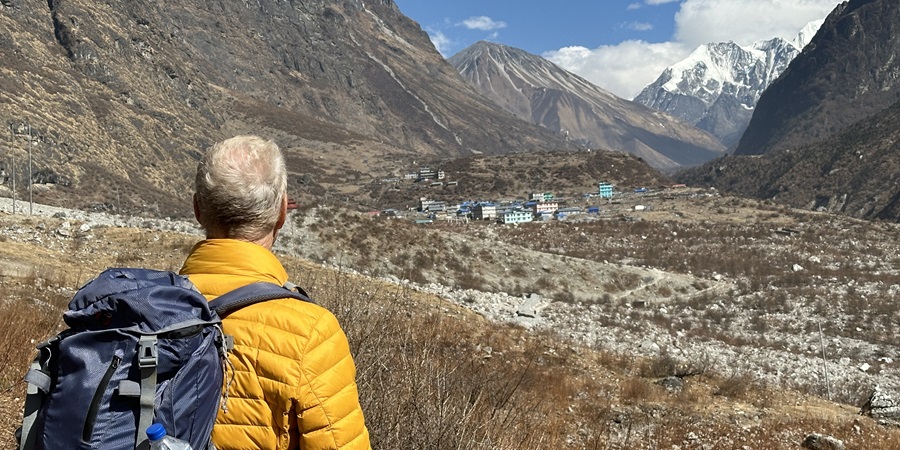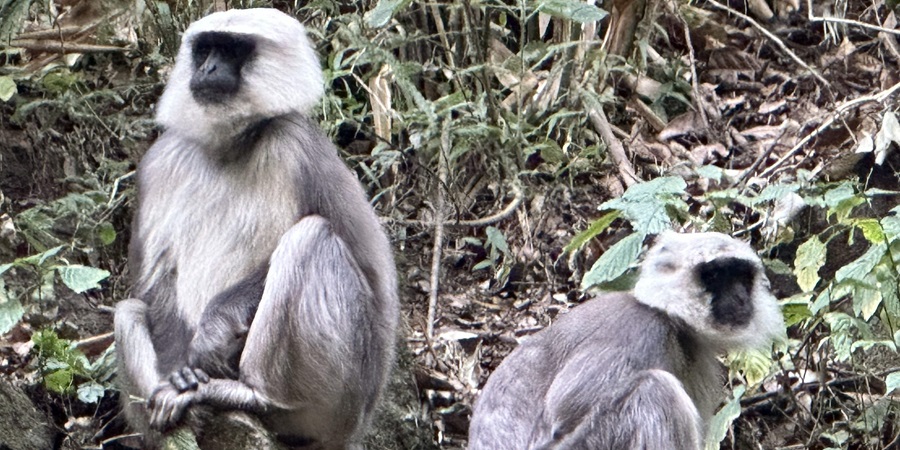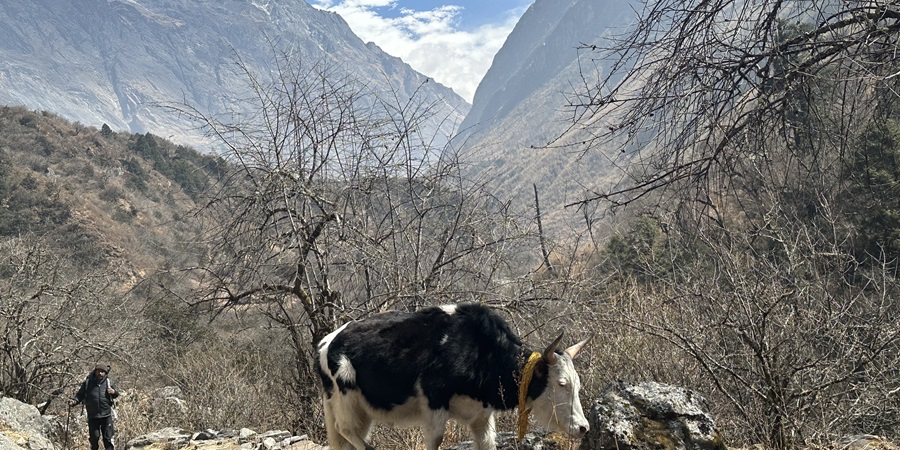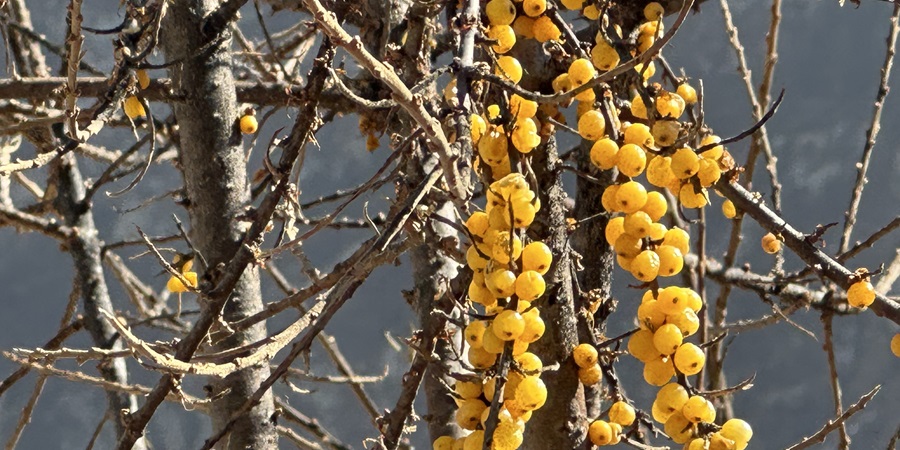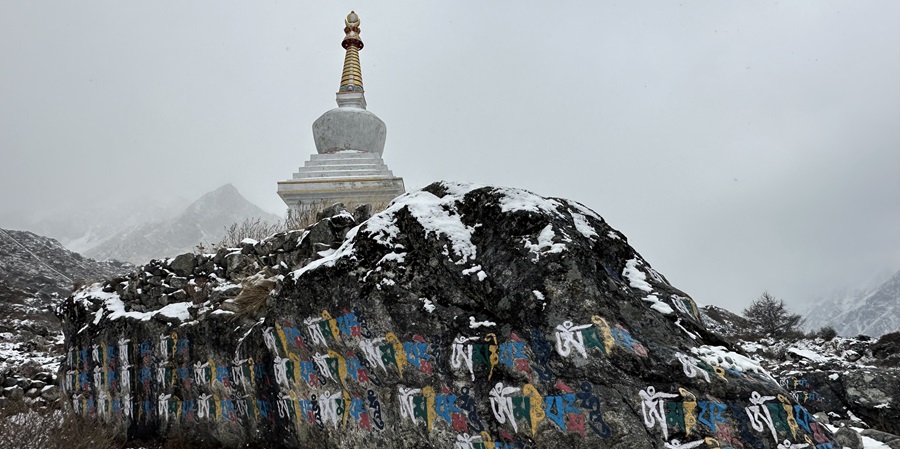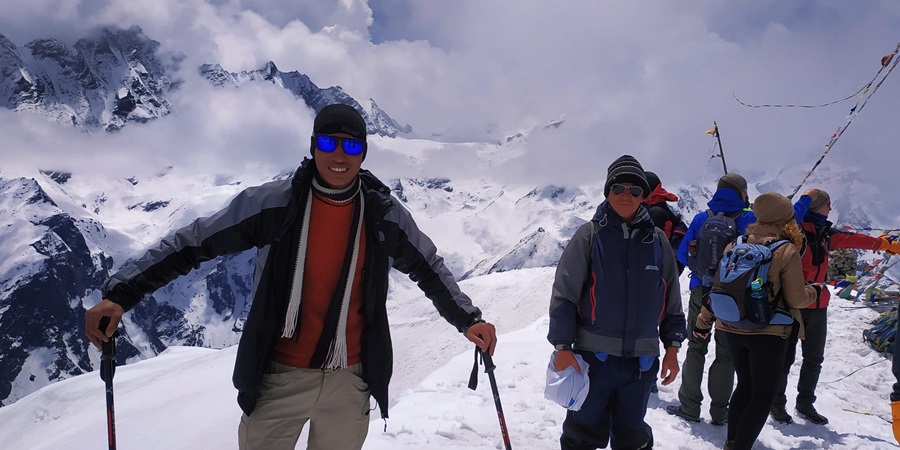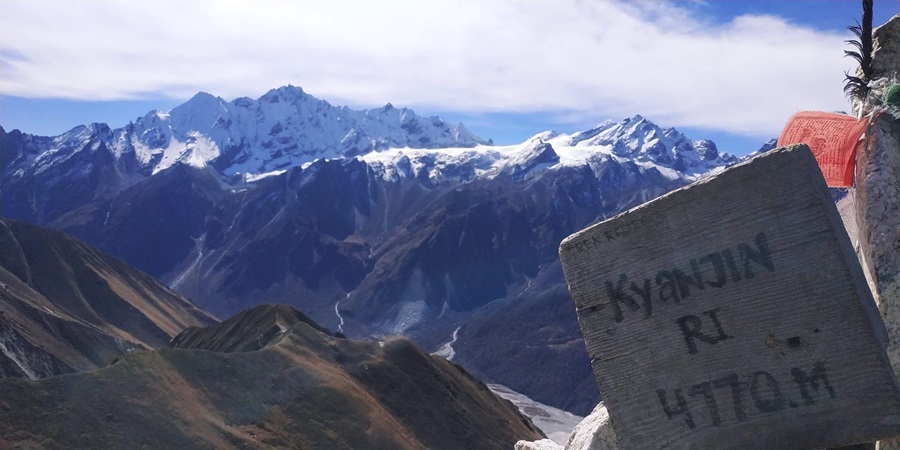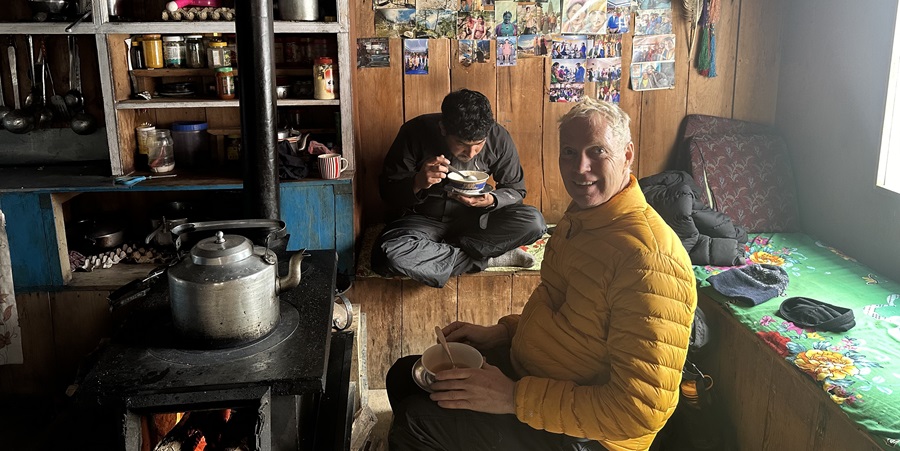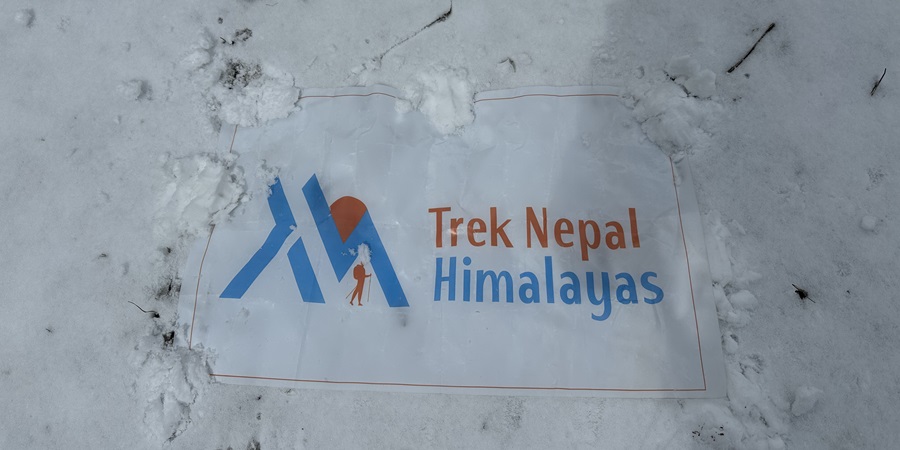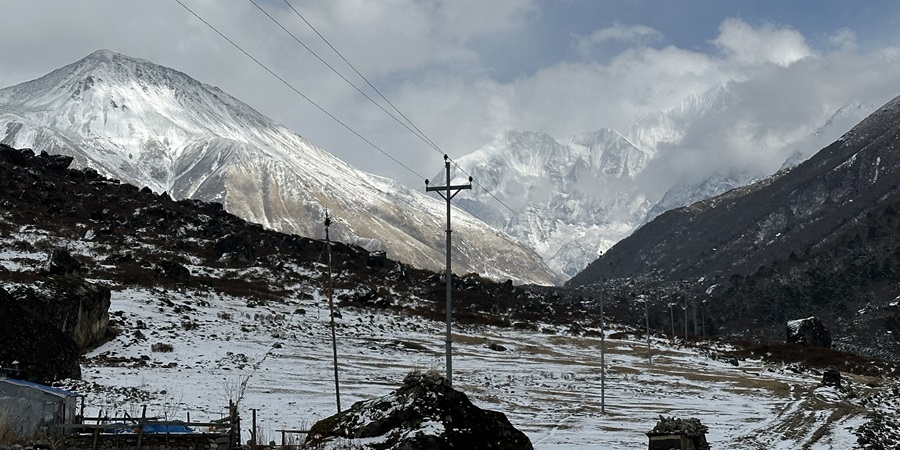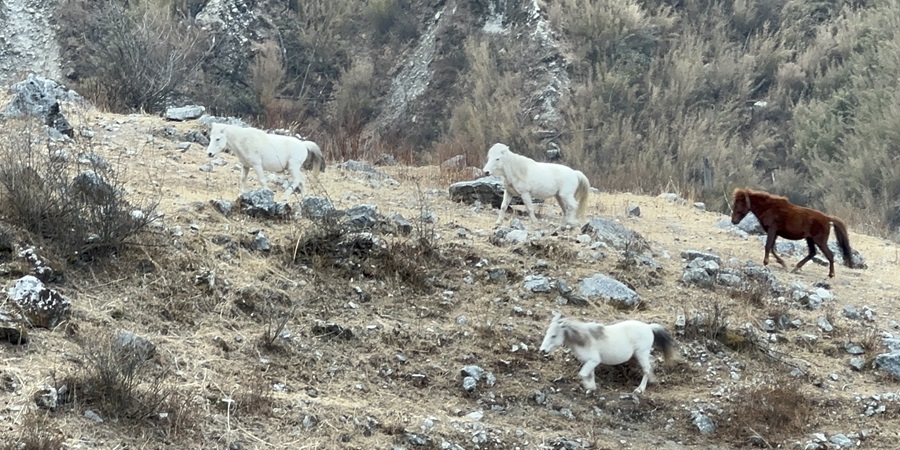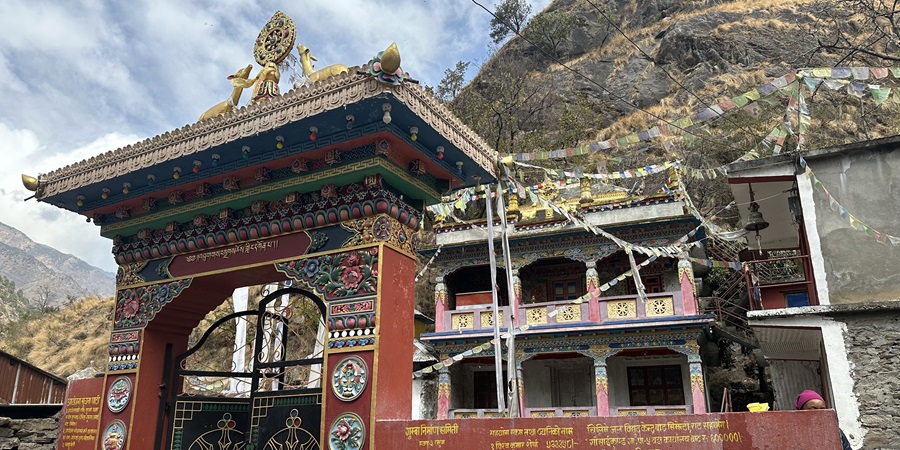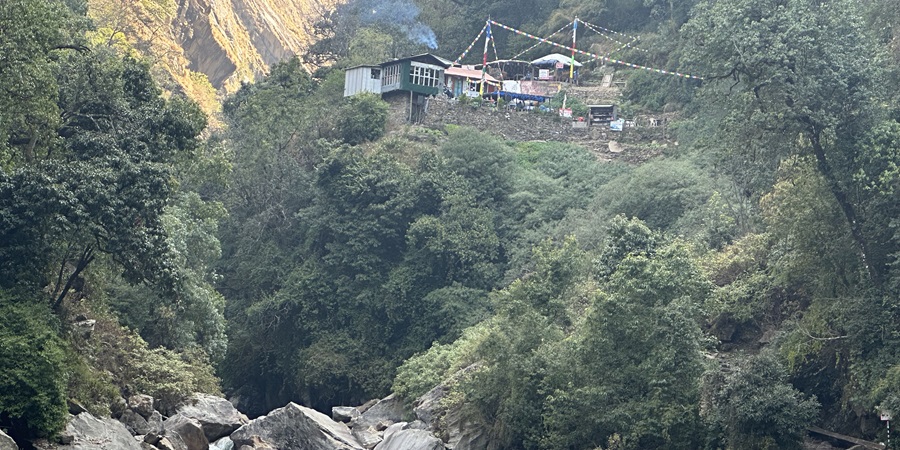Langtang Valley Trek
Setting out on a Langtang Valley Trek is not merely a passage through Nepal’s dramatic landscapes; it’s an immersive journey into the vibrant culture, deep history, and rich biodiversity nestled within the grandeur of the Himalayas. Located conveniently close to Kathmandu, the Langtang Valley presents trekkers with an accessible, yet profoundly transformative, experience, solidifying its status as an essential destination for those captivated by adventure and the allure of nature.
This journey into the Langtang Valley Trek begins under the gaze of Langtang Lirung, which towers at 7,234 meters, offering a mesmerizing backdrop of soaring peaks, expansive meadows, and dense woodlands that seem to echo with stories from a bygone era. This trek is as much a challenge to the spirit as it is a feast for the eyes, with each step forward revealing the breathtaking beauty of Nepal’s natural world.
The adventure commences with a scenic drive from Kathmandu to Syabrubesi, marking the transition from urban sprawl to serene rural landscapes. Syabrubesi, the starting point of the Langtang Valley Trek, acts as the threshold to an adventure that beautifully melds nature’s splendour with the cultural richness of the valley.
The path leads through oak and rhododendron forests, over bridges spanning crystal-clear streams, and past a mosaic of flora and fauna, offering a vivid portrayal of the region’s ecological diversity.
At the core of the Langtang Valley Trek is the vibrant culture of the Tamang communities, whose hospitality, traditional homes, and colourful monasteries add profound cultural dimensions to the trekking experience. Engaging with these communities offers a unique window into the lives of the Himalayan people, where ancient traditions are cherished and preserved with pride.
Venturing further into the valley unveils the expansive Langtang National Park, a bastion for wildlife and a symbol of Nepal’s dedication to preserving natural heritage. This protected area is a haven for rare species such as the red panda and snow leopard, making each step a journey through a vibrant, living ecosystem.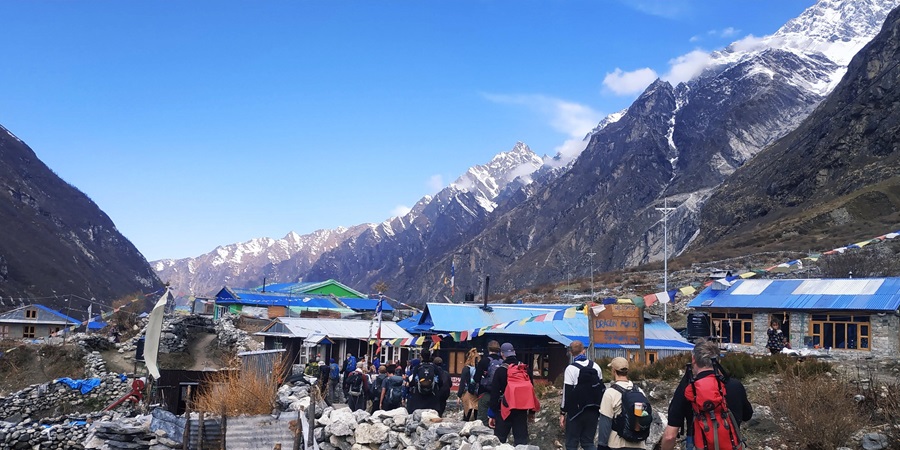
Arriving at Kyanjin Gompa, the pinnacle of the Langtang Valley Trek, signifies a moment of unparalleled accomplishment. Nestled among snow-draped mountains, this quaint village affords awe-inspiring vistas and a sense of peace that transcends the mere physical. It is a place for reflection, to ponder the journey undertaken, the obstacles surmounted, and the tranquillity discovered amidst the Himalayas’ majestic peaks.
The Langtang Valley Trek transcends a mere physical voyage; it represents a journey through history, a close encounter with the Himalayan spirit, and an intimate exploration of the symbiosis between nature and humanity.
Through this narrative of adventure, resilience, and splendour, we beckon you to explore the heart of Nepal, tread paths untrodden, and unveil the eternal charm of the Langtang Valley. This trek offers not just a journey across landscapes but an experience that captures the essence of the Himalayan ethos, inviting adventurers to become part of its ongoing saga.
Short Langtang Valley Trek Itinerary
- Day 1: Depart Kathmandu and journey to Syabrubensi via a scenic drive that introduces the changing landscapes of Nepal.
- Day 2: Trek from Syabrubensi to Lama Hotel, a route that takes you through enchanting forests alongside bubbling streams, offering the first taste of the trek’s natural beauty.
- Day 3: Continue from Lama Hotel to Langtang Village, where the path winds through higher elevations, revealing stunning vistas and the unique lifestyle of the local communities.
- Day 4: Ascend to Kyanjin Gompa, the spiritual and scenic highlight of the Langtang Valley Trek, surrounded by majestic mountains and ancient monastic traditions.
- Day 5: Engage in a day hike to either Kyan Ri or Tserko Ri, offering breathtaking panoramic views of the Himalayas and an opportunity to acclimatize further.
- Day 6: Begin the return trek to Lama Hotel, retracing steps but with a new perspective on the valley’s vast landscapes and serene beauty.
- Day 7: Trek down to Syabrubensi, the final leg of the journey through the Langtang Valley, allowing for reflection on the experiences and memories made.
- Day 8: Drive back to Kathmandu, concluding the Langtang Valley Trek with a heart full of memories and a spirit invigorated by the adventure.
Extended Itinerary of Langtang Valley Trek
Day 1: Begin your journey from Kathmandu to Syabrubensi, initiating the Langtang Valley Trek, through a scenic drive that showcases the beautiful and changing landscapes of Nepal.
Kick off your day with a hearty breakfast in Kathmandu, then proceed towards Syabrubensi, the starting point of the Langtang Valley Trek. The route to Syabrubensi can be taken via three distinct paths, each offering its unique views and experiences of Nepal’s diverse landscapes:

- Kathmandu – Galchi – Trishuli – Syabrubensi: Traveling this route, you’ll pass through picturesque landscapes and quaint towns, displaying a rich blend of cultural and natural beauty, setting the perfect prelude to the Langtang Valley Trek.
- Kathmandu – Kakani – Battar – Syabrubensi: This path gifts travellers with stunning valley views and lush surroundings, heightening the excitement for the Langtang Valley Trek.

- Kathmandu – Tokha – Trishuli – Syabrubensi: Offers a glimpse into rural Nepalese life with the serene Trishuli River as your companion, enhancing the approach towards the Langtang Valley Trek.
Enjoy a delightful lunch in Trishuli, providing a pleasant break to relish local cuisine amid scenic villages and alongside the river. The journey towards Syabrubensi continues with impressive mountain vistas, particularly from Dhunche, where the landscape opens up to reveal breathtaking views of the Himalayas, inviting trekkers to the Langtang Valley Trek.
Arriving in Syabrubensi, you’ll find yourself in a charming village on the banks of the Bhotekoshi River. Its tranquil atmosphere, combined with the surrounding natural beauty, offers a serene base to relax and mentally prepare for the trekking adventures that await on the Langtang Valley Trek. This initial step of the journey ensures trekkers are well-acclimated and ready to fully engage with the natural and cultural wonders of the Langtang Valley.
Challenging Ascent to Lama Hotel: The Pinnacle of Physical and Mental Endurance
Day 2: Trek from Syabrubensi to Lama Hotel, traversing through mystical forests and alongside serene streams, marking a captivating beginning to the Langtang Valley Trek’s pristine natural beauty.
Renowned as the most rigorous day of the journey, this segment tests the trekkers’ stamina and determination.
- Syabrubensi’s Starting Line: Commence at Syabrubensi, where the confluence of Langtang Khola and the Bhotekoshi River paints a picturesque gateway to the wilderness of Langtang Valley.
- Crossing Cultural Thresholds in Tiwari Village: After a suspension bridge, you step into Tiwari village, offering a precious peek into the Langtang Valley‘s local life and monastic traditions, reflecting the area’s rich cultural tapestry.
- First Rest Stop at Domen: This portion of the trek, 3.8 kilometres from Syabrubensi and elevating to 1695 meters above sea level, takes you to Domen for a well-deserved break, with nourishment available to fuel the journey ahead.

- Midday Respite in Bamboo: Proceeding 3.2 kilometres to Bamboo, positioned at 2037 meters, offers an idyllic lunch setting by the Langtang Khola. This spot is dotted with tea shops serving up local flavours, ready to satiate hungry trekkers.
- Ascend to Rimche: The route climbs to Rimche, 3.1 kilometres up, reaching 2499 meters. Rimche serves as a critical juncture for Langtang Valley Trek and Tamang Heritage Trail explorers, boasting facilities such as wifi, hot showers, and food in its welcoming teahouses.
- Final Stretch to Lama Hotel: Concluding the day is a 1.2-kilometer trek to Lama Hotel, a mostly flat route leading to 2512 meters. This leg, requiring about 30 more minutes, introduces trekkers to a quaint settlement with hospitable teahouses, offering a comforting end to the day’s exertions.

Trekking Metrics for the Day:
- Total Walking Distance: Approximately 11.3 kilometres.
- Total Walking Hours: Around 6 to 7 hours, considering the challenging terrain and significant elevation gain.
- Elevation Gain: An ascent from Syabrubensi at 1467 meters to Lama Hotel at 2512 meters, totalling an elevation gain of about 1045 meters.
This demanding day of the Langtang Valley Trek epitomizes the challenge of trekking in the Himalayas, blending physical demands with the enriching reward of breathtaking landscapes and deep cultural immersion. It prepares trekkers for the adventures that lie ahead, with the satisfaction of overcoming the trek’s toughest challenges.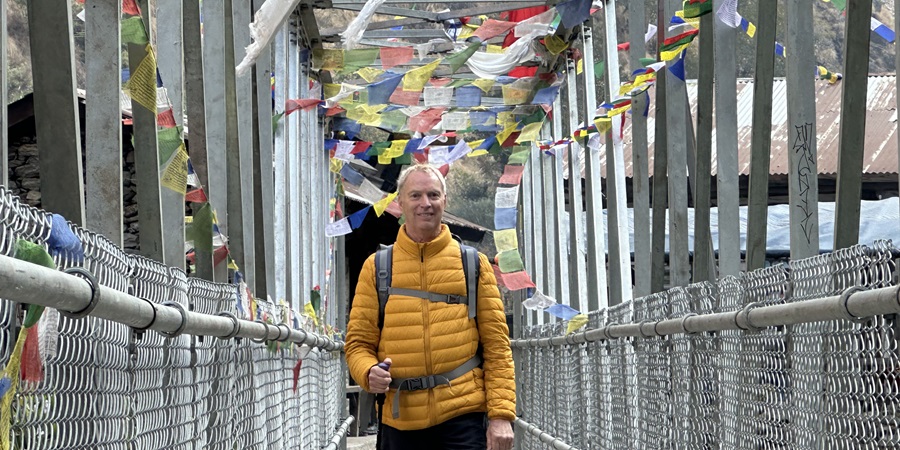
Ascend to Langtang Village: Traversing Cultures and Elevations
Day 3 of the Langtang Valley Trek takes you from Lama Hotel to Langtang Village, through paths that climb to higher elevations, showcasing magnificent views and introducing the distinctive lifestyle of Himalayan communities.
This leg of the journey is rich in both natural beauty and cultural encounters, offering a comprehensive Himalayan trekking experience.
- Morning Break at Chhunama: Your day starts with a trek to Chhunama for a tea break, 3.2 kilometres from Lama Hotel. This teahouse, located at 2802 meters above sea level, provides food, drinks, and accommodation, making it a perfect spot for an early rest. The walk of about 2 hours and 15 minutes to Chhunama is the first leg of today’s journey, offering serene surroundings to enjoy your break.

- Lunch at Ghoda Tabela: Continuing, Ghoda Tabela lies 2.7 kilometres ahead, requiring around 1 hour and 30 minutes of walking. At an elevation of 3042 meters, this stop is noted for its superior lunch options and stunning mountain vistas. It also hosts a checkpoint, serving as a significant midway point for trekkers to refuel and admire the views.
- Visit Thangshyap Village: The path then leads to Thangshyap, a charming village 1.9 kilometres away, situated at 3194 meters above sea level. The journey takes about 1 hour and 15 minutes, offering teahouses and spots to enjoy food and drinks amidst the beauty of the Himalayas.
- Exploration of Gumba: Gumba is your next destination, 2.6 kilometres from Thangshyap, with a walking time of approximately 1 hour and 30 minutes. Positioned at 3403 meters, Gumba presents even more impressive views of snow-capped mountains and a glimpse of Langtang Village in the distance. This village is equipped with teahouses and lunch places for another refreshing stop.

- Arrival at Langtang Village: The final leg of today’s trek is to Langtang Village itself, 1.5 kilometres from Gumba. About 1 hour of walking brings you into the heart of the Langtang Himalayas. Langtang Village offers an array of teahouse options and is uniquely located in the lap of the mountains. Trekking through, you’ll encounter the original village site, devastated by the earthquake, including a house that remarkably withstood the disaster. This poignant reminder adds depth to your arrival in the new village, enriching the trek with historical and emotional layers.

Day 3 Langtang Valley Trek Overview:
- Total Distance: 11.9 kilometers
- Estimated Walking Time: 7 hours and 30 minutes
- Key Elevations: From 2802 meters at Chhunama to 3403 meters at Gumba, culminating in Langtang Village.
This day on the Langtang Valley Trek epitomizes the essence of trekking in Nepal, blending rigorous physical challenges with unparalleled scenic beauty and deep cultural immersion. The journey from Lama Hotel to Langtang Village is a testament to the resilience of the human spirit and the majestic allure of the Himalayas, promising trekkers an unforgettable experience.
Spiritual Ascent to Kyanjin Gompa: Embracing Monastic Traditions and Mountain Grandeur
Day 4 of the Langtang Valley Trek marks a pivotal journey towards Kyanjin Gompa, the spiritual heart and scenic zenith of the trek. This day is a blend of spiritual enlightenment and natural splendour, set against the backdrop of the Himalayas’ towering peaks.
- From Langtang Village to Mundu: The day begins with a trek from Langtang Village to Mundu, a distance of 2.8 km. This leg, taking approximately 1 hour and 30 minutes, elevates trekkers to 3540 meters. The path boasts Nepal’s longest Mani wall, a testament to the region’s rich Buddhist heritage, and offers views even more striking than those from Langtang Village. The journey to Mundu is not just a physical trek but also a spiritual passage, inviting trekkers to immerse themselves in the area’s profound cultural and natural beauty.
- Mundu to Sindum: A brief walk of 610 meters (about 15 minutes) leads to Sindum, situated at an elevation of 3559 meters. This beautiful village captivates with its expansive mountain views and the presence of yaks grazing in the highlands. Sindum is a picturesque hamlet that encapsulates the serene harmony between nature and local lifestyles.

- Sindum to Kyanjin Gompa: The final stretch to Kyanjin Gompa covers 4.4 km and is expected to take around 2 hours and 45 minutes. The trek meanders past a few cafes and chortens, enhancing the spiritual ambience of this leg.
- Crossing the final suspension bridge introduces trekkers to Kyanjin Gompa, perched at 3857 meters above sea level. This destination is encircled by 360-degree mountain views, offering a profound sense of solitude and spirituality. Kyanjin Gompa is not just a physical location but a spiritual haven, with numerous teahouses providing warm hospitality against the stark beauty of the high Himalayas.
Day 4 Langtang Valley Trek Summary:
- Total Distance: 7.8 kilometers
- Estimated Trekking Time: Around 5 hours and 30 minutes
- Elevation at Kyanjin Gompa: 3857 meters

Reaching Kyanjin Gompa is a moment of accomplishment, blending the awe of natural beauty with the depth of ancient monastic traditions. It’s a day where physical boundaries are transcended, and trekkers are invited to connect with the spiritual essence of the Himalayas.
The journey to Kyanjin Gompa is a highlight of the Langtang Valley Trek, offering an unparalleled experience of serenity, beauty, and cultural richness in the heart of Nepal’s mountainous landscape.

